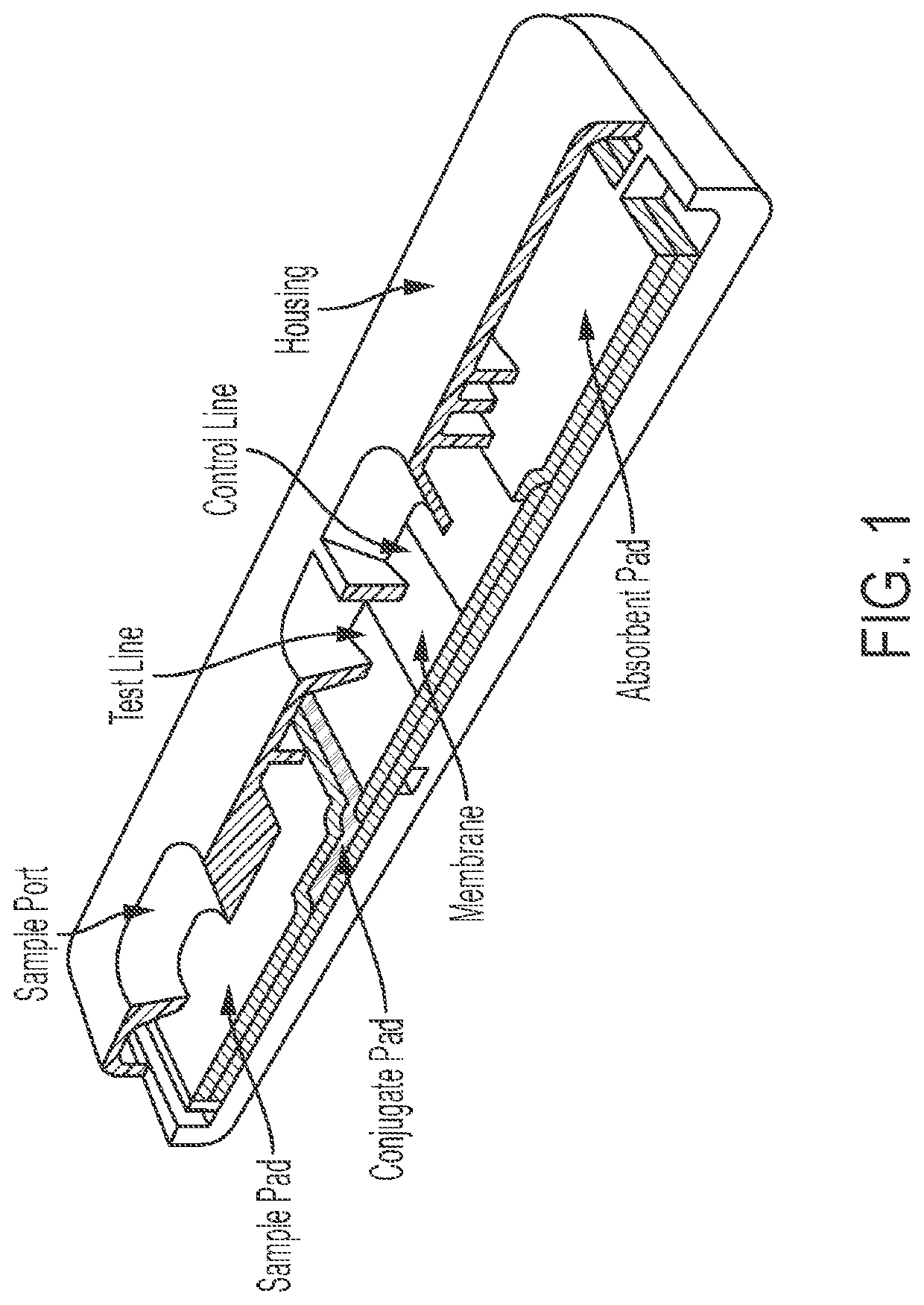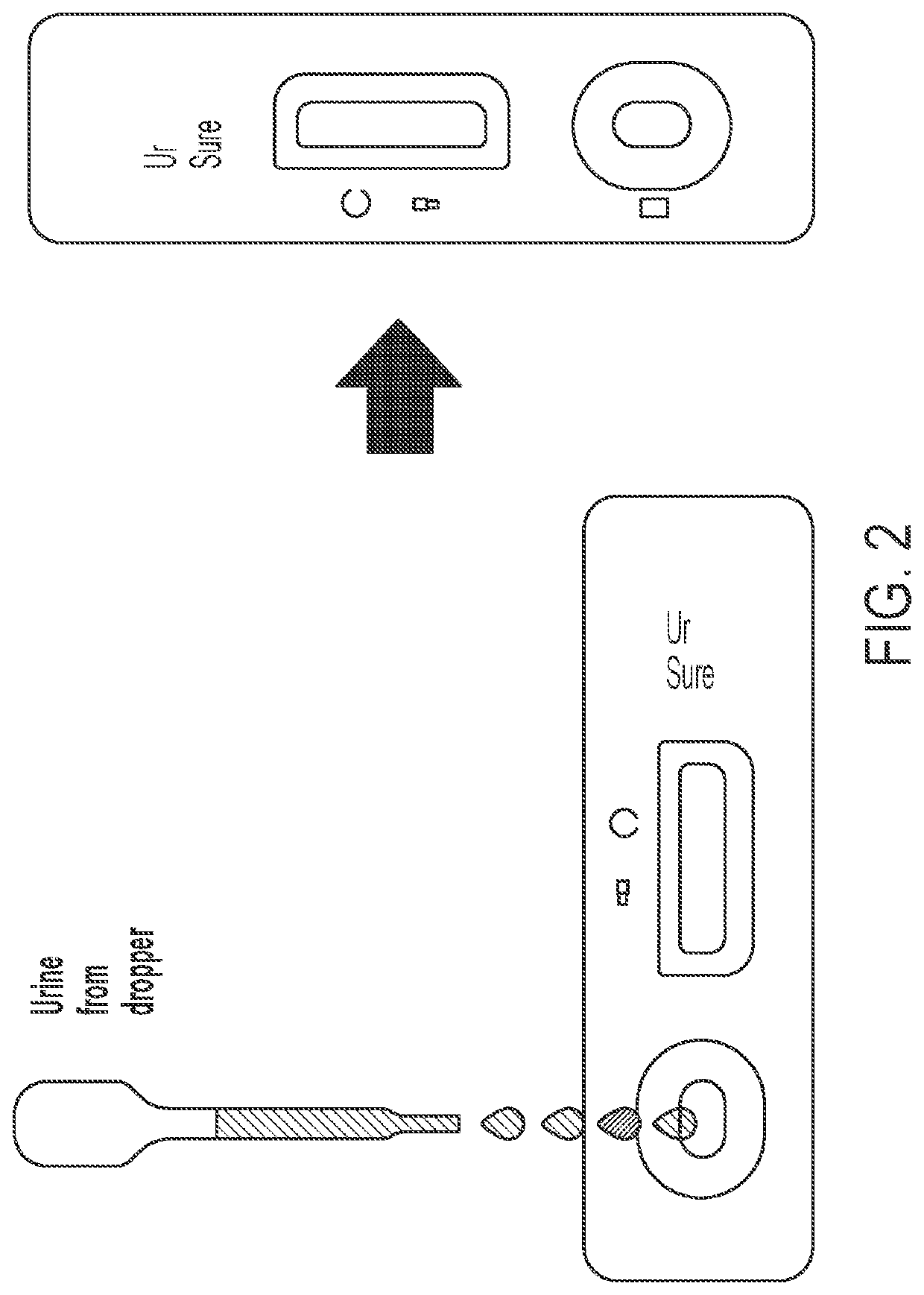System and method for detecting therapeutic agents to monitor adherence to a treatment regimen
a detection system and therapeutic agent technology, applied in the field of system and method for detecting therapeutic agents to monitor adherence to a treatment regimen, can solve the problems of inability to meet patients and providers, not being a widely adopted method for improving drug adherence, and not providing real time data. the effect of prevention
- Summary
- Abstract
- Description
- Claims
- Application Information
AI Technical Summary
Benefits of technology
Problems solved by technology
Method used
Image
Examples
example 1
r Detecting NRTI in a Urine Sample
[0215]TDF / FTC (Truvada™) is approved for pre-exposure prophylaxis (PrEP) for HIV infection. Adherence is critical for the success of PrEP, but current adherence measurements (self-report) and plasma tenofovir (TFV) levels are inadequate tools for real time adherence monitoring. To develop and validate a whole blood or plasma assay for the measurement of TDF levels to objectively monitor adherence to PrEP, three cohort studies were conducted to assess a system for detection of the active metabolite TFV of the prodrug NRTI tenofovir disoproxil fumarate (TDF). Cohort 1 was a cross sectional study of 10 HIV positive subjects with undetectable HIV viral loads on a TDF-based regimen; cohort 2 was a single dose study of Truvada in 10 healthy subjects to evaluate TFV clearance in plasma and urine over 7 days; and cohort 3 was a 16 week study of 10 HIV negative subjects receiving daily PrEP to evaluate concordance between plasma and urine over time.
example 2
od or Plasma Assay Development
[0216]Antiretroviral concentrations in whole blood or plasma are potentially useful in monitoring adherence to PrEP. Tenofovir is an attractive drug to be used for monitoring adherence as it has a plasma half-life of 17 hours and intracellular half-life of 150 hours (Hawkins 2005), which allows the detection in whole blood or plasma for several days. Preliminary data indicates that TFV levels can be reliably measured in whole blood or plasma, and that TFV detection in whole blood or plasma reflects medication usage over a window of one to at least seven days after oral TDF or TAF ingestion.
[0217]There is no standard adherence measurement that provides real time evaluation of adherence in patients receiving TDF or TAF to prevent or treat HIV infection. Whole blood or plasma assays used for TDM have been shown to have clear benefit in improving adherence in several different fields, as described above, with very little downside when used as an adjunct to ...
PUM
| Property | Measurement | Unit |
|---|---|---|
| concentration | aaaaa | aaaaa |
| concentration | aaaaa | aaaaa |
| concentration | aaaaa | aaaaa |
Abstract
Description
Claims
Application Information
 Login to View More
Login to View More - R&D
- Intellectual Property
- Life Sciences
- Materials
- Tech Scout
- Unparalleled Data Quality
- Higher Quality Content
- 60% Fewer Hallucinations
Browse by: Latest US Patents, China's latest patents, Technical Efficacy Thesaurus, Application Domain, Technology Topic, Popular Technical Reports.
© 2025 PatSnap. All rights reserved.Legal|Privacy policy|Modern Slavery Act Transparency Statement|Sitemap|About US| Contact US: help@patsnap.com


